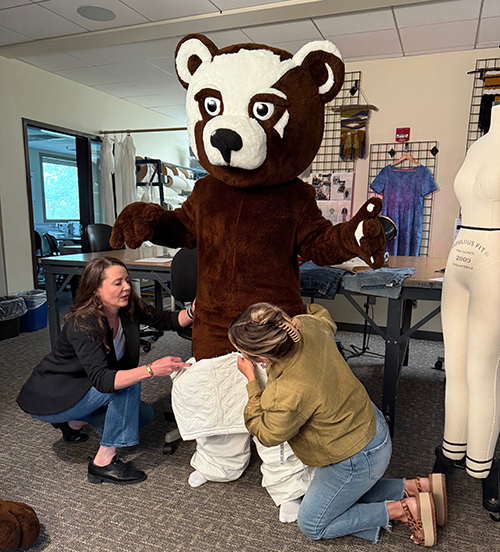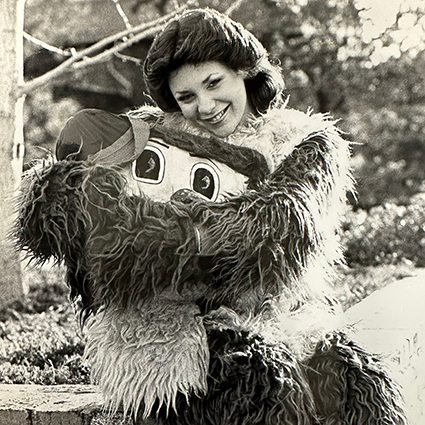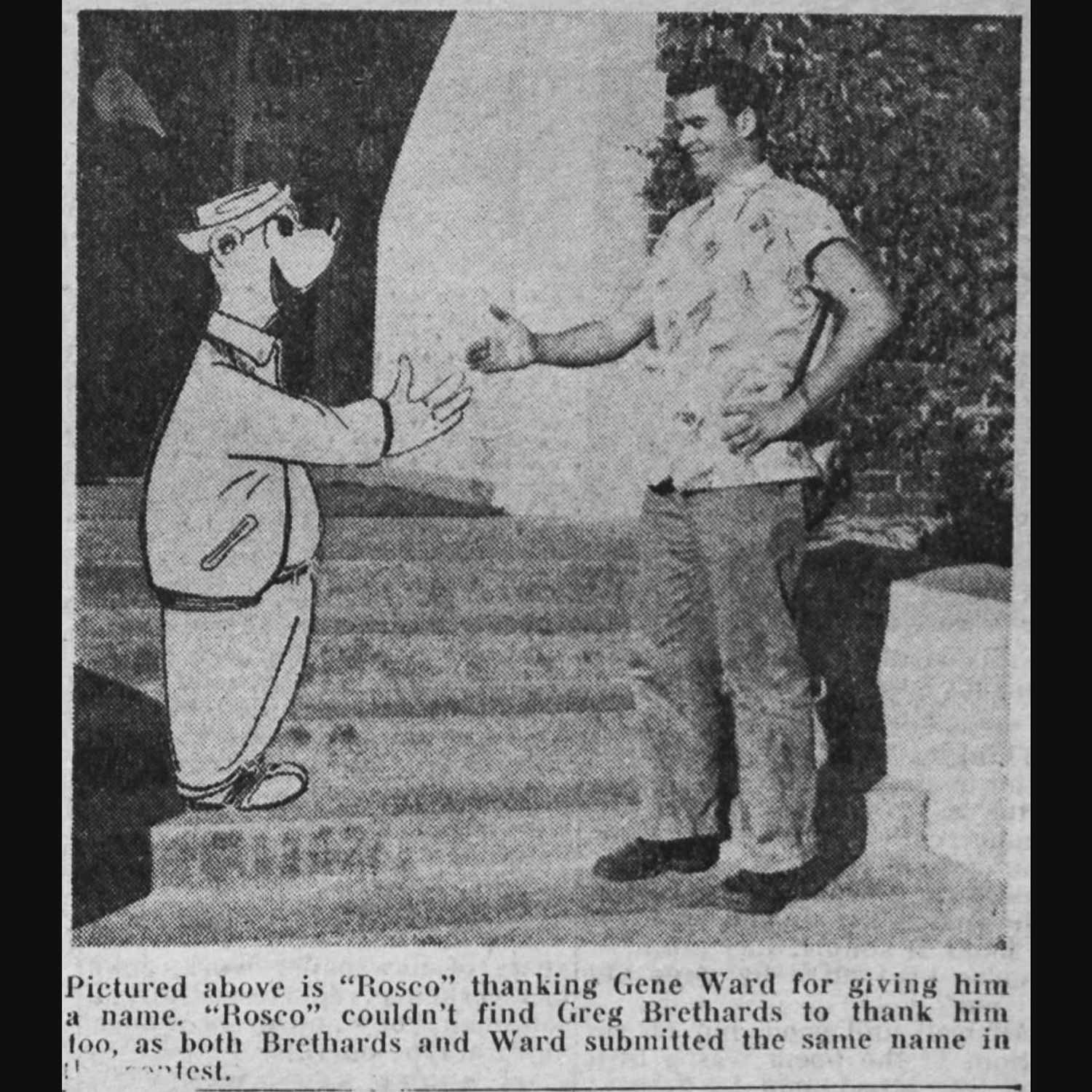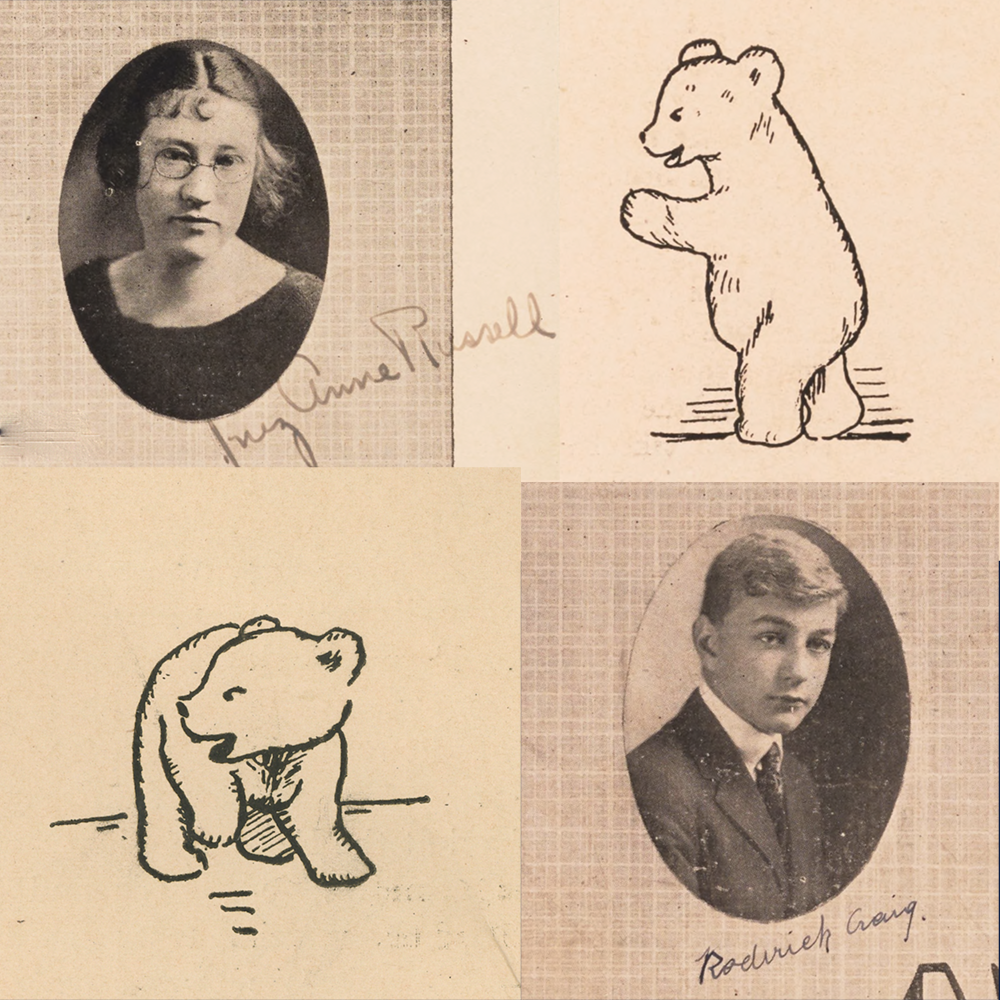The 2024 Rosco Redesign
Over the past 100 years, SRJC has had over 25 different Rosco designs. In 2023 alone, there were more than eight different versions of Rosco in use by various departments, programs, and student organizations. Some depicted an adult bear, while others showed a bear cub. Some were walking, others were sitting. One version, known as the Sailor Bear, was even in use by other colleges and universities! This version, created in the 1950s by an illustrator named Arthur Evans, was offered to colleges across the country as Evans visited and drew mascots for them. At that time, colleges were truly regional, and few people saw mascots from outside their region. Evans created the Sailor Bear not just for SRJC, but for almost any school with a bear mascot, including Baylor University.
Rosco needed a unified image to build identity, belonging, community, and fun at SRJC.
With the arrival of a new president and the beginning of SRJC's second century, a group of employees, students, and a retiree representing all constituent groups gathered to build support for a new unified Rosco design. In 2024, the Rosco Redesign Workgroup, with input from the SRJC community through a survey, defined Rosco's personality as Strong, Encouraging, Proud, and a Leader. The workgroup chose not to change Rosco’s name and kept Rosco as a brown bear cub to honor the past.
After a year of work, the final design features Rosco with two expressions: a friendly, welcoming face and a fierce, strong face. We’re excited to see the community adopt and use the new Rosco!

August 12, 2025
 Our beloved mascot, Rosco the Bear Cub, received a makeover last year. However, Rosco has never had any clothes and wanted something new for back-to-school. The Fashion Studies Program instructor and students heard this and created Rosco's first-ever custom outfit out of recycled materials. The big reveal will be on August 14 at Welcome Day on the Santa Rosa Campus. The story of how this came together can be read at https://news.santarosa.edu/roscos-back-school-clothes.
Our beloved mascot, Rosco the Bear Cub, received a makeover last year. However, Rosco has never had any clothes and wanted something new for back-to-school. The Fashion Studies Program instructor and students heard this and created Rosco's first-ever custom outfit out of recycled materials. The big reveal will be on August 14 at Welcome Day on the Santa Rosa Campus. The story of how this came together can be read at https://news.santarosa.edu/roscos-back-school-clothes.
July 31, 2024
Who is wearing Rosco’s costume at games and events? It’s a big secret!
 For many years, the student chosen to be Rosco was appointed, selected, or elected by the student government for a one-year term. Until the last day of their appointment, the identity of the student wearing the costume was kept secret. The individual in the costume was sworn to secrecy and silence. They would get dressed privately and then emerge from the student government offices as the mascot. Students wearing the costume were trained in poise and performance skills before they were ready to wave during school functions or pose with others.
For many years, the student chosen to be Rosco was appointed, selected, or elected by the student government for a one-year term. Until the last day of their appointment, the identity of the student wearing the costume was kept secret. The individual in the costume was sworn to secrecy and silence. They would get dressed privately and then emerge from the student government offices as the mascot. Students wearing the costume were trained in poise and performance skills before they were ready to wave during school functions or pose with others.
The job was not glamorous, and everyone knew how stuffy (and smelly) the costume could be, especially on hot days. The costume underwent many cleanings, repairs, and modifications over the years—Rosco lost paws, seams came apart, and the head sometimes didn’t fit correctly. Despite these challenges, there was pride and joy in being Rosco the SRJC Bear Cub, embodying the spirit of the college and spreading joy around the campus and at county events.
1978/1979 photo of SRJC alumna Dana Denardo wearing the Rosco costume. Photo from the SRJC Archives.
July 23, 2024
How Rosco Got His Name
 Do you know that the SRJC Bear Cub did not have a name for the first three decades of its existence?
Do you know that the SRJC Bear Cub did not have a name for the first three decades of its existence?
More than thirty years have passed since 1918, when the Santa Rosa Junior College students selected the bear cub as their emblem and mascot, yet the cub was not named.
In April 1949, the Patrin yearbook editor Jerry O’Leary reminded members of the executive council of the student body that a name was long overdue. This motivated the student body to hold a contest to name the bear cub.
The Oak Leaf from 19 April 1950 wrote: “On Tuesday and Wednesday of this week fast action was taken on the bear cub naming idea. With strong publicity through verbal announcements and posters, the drive for name suggestions was launched. Special boxes were placed at convenient locations. A committee from the executive council will be chosen to meet on Wednesday afternoon and decide on the best and most appropriate name.”
At the end of the week-long contest, nearly fifty names were submitted. The Executive Council declared ROSCO as the winning name, which was submitted separately by two students, F. Eugene Ward and Greg Brethards.
The Oak Leaf from 26 April 1950 reported: “The Council felt that the name of Rosco best fits the mascot. The reason given for the name of “Rosco” was that separated the Ros part of the name was for Rosa in Santa Rosa. The co part of the name was short for college.”
Among the names submitted were Towser, Ruff, Chip, Bruno, Hooligan, Scrappy, Randy, Spike, Buffi, Pepper, Buzzy, Duffy, Terry, Gerry, Pandy, Oski Jr., Clio, Daphne, Sarge, Benney, Benirosco. The list was narrowed down to four names, two of which were chosen by a ballot, and Rosco won.
The photo from the Oak Leaf shows Rosco shaking hands with F. Eugene Ward, one of the two students who gave the Bear Cub “a name that will stick for decades to come.”
July 16, 2024
How The Bear Cub Became the Emblem of the Student Body
 “We wish it known that we, as the student body of the Junior College, chose the bear cub as our emblem because we admired it and wished to be known as possessing some of its characteristics. Bear Cubs are intelligent and given to investigation. They are full of fun and enjoy life. Are not these worthy traits?”
“We wish it known that we, as the student body of the Junior College, chose the bear cub as our emblem because we admired it and wished to be known as possessing some of its characteristics. Bear Cubs are intelligent and given to investigation. They are full of fun and enjoy life. Are not these worthy traits?”
More than 100 years ago, in 1920, student Roderick Craig (Class of 1921) opened the first Santa Rosa Junior College yearbook with an article about the Bear Cub. Roderick was the business manager for the first edition of the yearbook, published by the Associated Students of Santa Rosa Junior College. The yearbook highlighted the first graduating class of 1920 and what the new community college, founded in 1918, stood for.
The first JC students selected the cub as their emblem and mascot for multiple reasons. “The Junior College is a branch of the University of California; their emblem is the bear, hence ours is the bear cub. Then, too, the bear is the insignia upon our state flag,” wrote Roderick Craig.
The first drawings of the cute bear cub, from the 1920 yearbook, were signed by Inez Anne Russell from the first graduating Class of 1920.
And this is how, throughout the years, everyone who took a class or a degree, regardless of age, became known as an SRJC Bear Cub.
***
The college yearbooks, including those from 1920 to 1926, named The Bear Cub, were digitized through the diligent work of the SRJC Archives. You can read the digitized yearbooks on the Internet Archive, via this link: https://libraries.santarosa.edu/archives.
